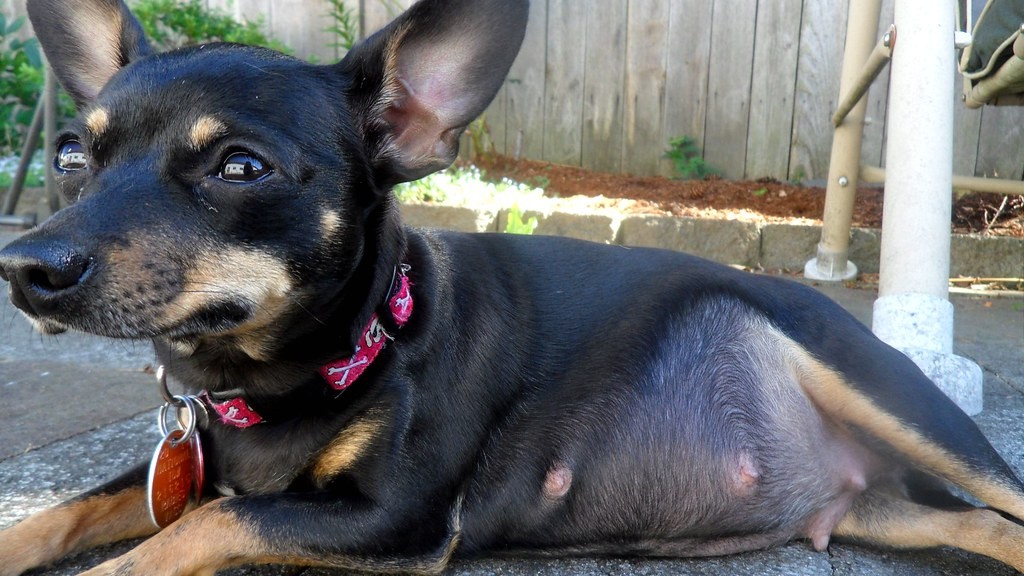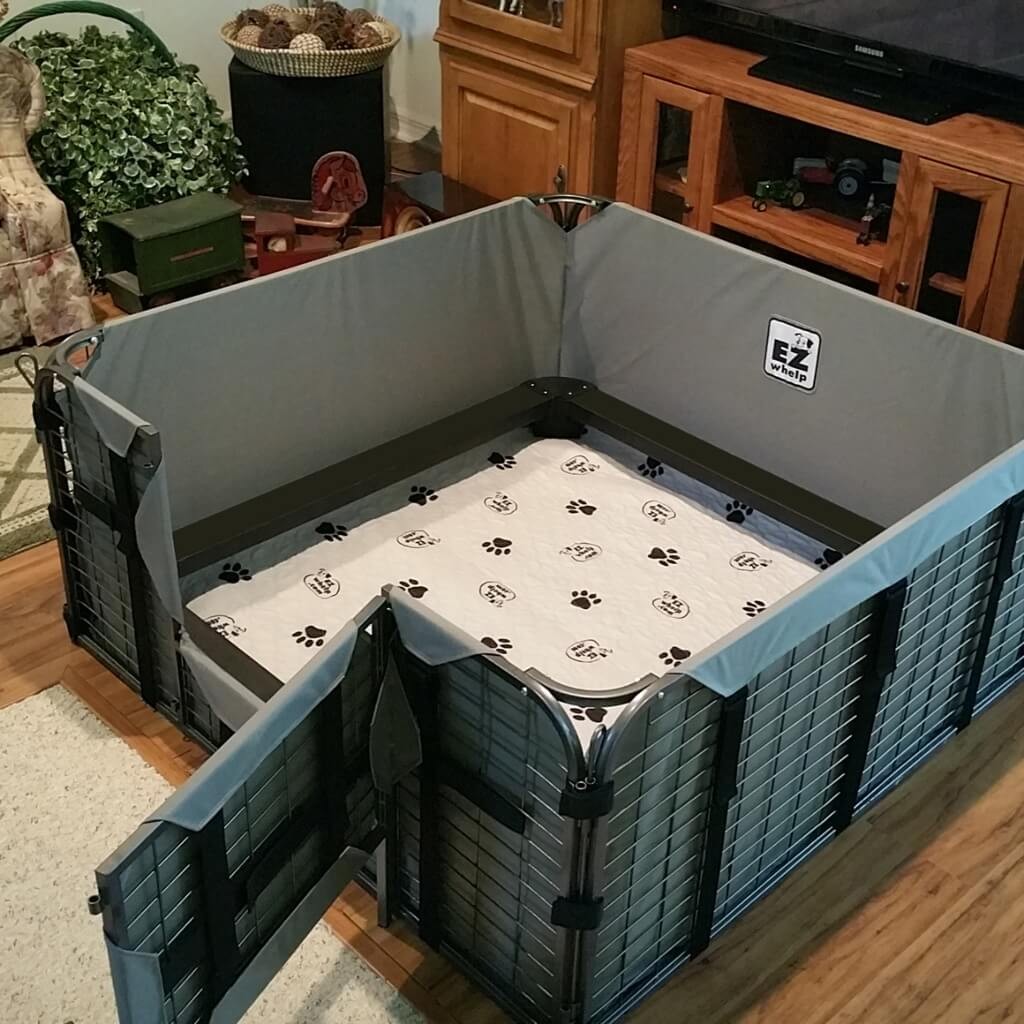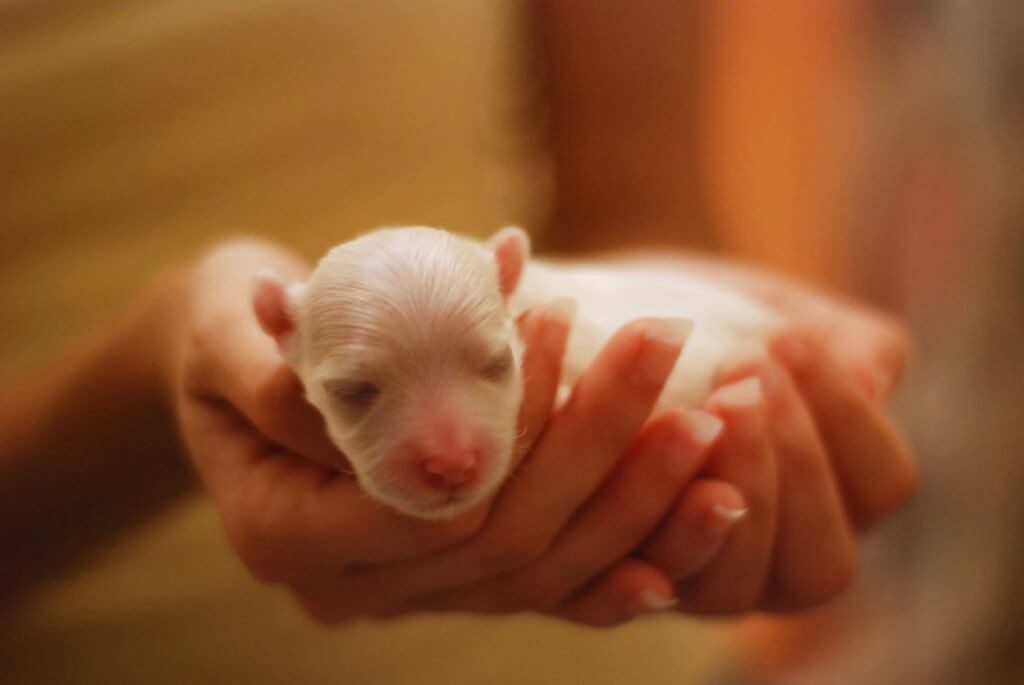Dog Pregnancy: Length, Test, Signs, and More

Breeding dogs is a huge responsibility, there’s a lot to learn about dog pregnancy and it’s important you work with a vet to ensure you provide your dog with the best care throughout their pregnancy and whelping.
Welcoming a litter of puppies may be cute but it can also be stressful, time-consuming, and costly. In this guide, we take you through some of the need-to-know information about dog pregnancies and whelping.
Signs of Pregnancy in Dogs
A dog’s gestation period is 61 - 65 days but how do you know if your dog is pregnant? It may not be obvious your dog is pregnant until they are well into their pregnancy. Keep a lookout for the following signs:
Slight mucous discharge (seen around one month after mating took place)
Increase in teat size and colour (seen around 30 days after mating)
Vomiting a small amount (during the early stages of pregnancy)
Weight gain (from day 35, her weight will increase by up to 50% during the pregnancy)
Swollen tummy (from day 40)
An increased appetite (during the latter half of the pregnancy)
Nesting behaviours
Tires more quickly
Increased irritability
As you can see, many of the dog pregnancy signs don’t start to show until between days 35 and 40. It is around this time their belly will increase in size and their nipples will begin to enlarge. During the final week, there may be a small amount of milk leaking from the nipples.
It’s a good idea to look at dog pregnancy stages week by week pictures to give you a clearer idea of what changes you can expect to see in your dog when they are pregnant.
In some cases, a dog may feel, act, and look pregnant when she isn’t. This is called a phantom pregnancy (or false pregnancy) and is common in dogs. Phantom pregnancies are caused by the hormones that are released following a season. Always confirm the pregnancy with the vet before preparing for a litter of puppies.
How Do Vets Confirm Pregnancy?

Attribution 2.0 Generic (CC BY 2.0) - Victoria Wong
The way a vet confirms a pregnancy can depend on how long your dog has been pregnant. From days 21 to 25, a vet can measure your dog’s hormone levels using a dog pregnancy test. From day 20 to 22, a vet will be able to perform an ultrasound to confirm the pregnancy. After day 30, a vet will be able to confirm a dog is pregnant and give an estimate of how many puppies there are by carrying out a physical examination.
Remember, the puppy count you receive during these appointments may not always be accurate so be prepared for more puppies than you thought just in case.
How To Care For A Pregnant Dog
An extremely common question dog owners ask is: how long are dogs pregnant? A dog pregnancy lasts for 61 - 65 days (or around two months) and their needs will differ slightly during this time. It can be difficult to predict the timing of the puppies’ arrival unless you know the exact date the mating took place.
Nutrition
A pregnant dog has different nutritional needs from usual, for the first two-thirds of the pregnancy, you won’t need to make changes to her diet unless instructed to do so by the vet. However, as the pregnancy progresses, the dog will need to consume more food as her weight increases.
A pregnant dog in the last third of her pregnancy will need to eat 2 - 3 times more food than normal and will need food that is specifically designed and tailored for the needs of pregnant (or lactating) dogs. The right high-quality food will ensure she gets all the nutrients she needs and will help to reduce the chance of problems.
It is better to increase the amount of food gradually and increase the number of smaller meals being offered rather than simply giving larger meals. Offering larger meals can cause discomfort so avoid doing this.
Vet Visits
The first thing to do is take your dog to the vet for a prenatal checkup before you breed her. She needs to be up to date with her vaccinations and may need specific health tests performed to ensure she does not have any hereditary conditions that can be passed down to the puppies.
The vet will be able to offer advice on caring for your dog throughout the pregnancy and it’s a good idea to schedule regular vet visits to ensure your dog stays healthy.
When your dog is pregnant, the vet will examine them for any concerns or signs of abnormalities. The vet will also discuss with you the logistics of the births (normal birth vs caesarean).
Worming
The vet may recommend de-worming treatment before mating. Your dog will also need more frequent deworming during her pregnancy to prevent the puppies from getting worms from the mother.
As not all wormer treatments are designed for use during pregnancy it’s important to speak to your vet about which one to use.
Exercise
Exercise is important but so is rest, let your dog decide how much physical activity she needs. As she enters into the later stages of the pregnancy she won’t want to do as much exercise as she normally would. Any exercise she does should be short and not strenuous. Smaller, more frequent walks will be most beneficial.
How to Prepare for Dog Birth (Whelping)
You Will Need:
Due Date
It is helpful to know the approximate date the puppies are due as this will help you fully prepare for whelping. During the final stages of the pregnancy, monitor your dog closely to look for signs of whelping (listed in the section below).
Whelping Box

Attribution-ShareAlike 4.0 International (CC BY-SA 4.0) - Boofuss60
A whelping box is a large box that is warm, comfortable, and lined with washable bedding. The box can be homemade and needs to be in a quiet, secluded room that is kept at around 22 degrees C.
The whelping box needs to be large enough that your dog can turn around and stretch out inside and the walls need to be high enough to stop the puppies from escaping while being low enough that the mother can step out when she wants to. The whelping box also needs to have barriers inside to stop the puppies from being pushed against the walls.
Vet Care
Make sure your dog is registered with a vet and you have discussed the situation with them. The vet will be able to guide you through the pregnancy and offer advice on whelping. Keep the veterinary clinic number saved in case of emergencies during whelping.
What To Expect
There are 3 key stages of normal whelping:
Stage 1: Preparation
In the first stage, your dog is preparing to give birth. Her birth canal will relax and widen and the puppies will move into the correct position ready for birth. Usually, this preparation stage lasts 6 - 12 hours but it can last up to 36 hours. During this first stage you may see the following signs:
Nesting
Restlessness
Panting
Hiding away
Eating less
Small amounts of red/ brown mucous coming from her vulva
Weak contractions but not straining
Just before your dog starts to give birth, she will settle down (ideally she will be in her whelping box).
Stage 2: Giving Birth
When your dog is ready to give birth, dog labour signs include strong contractions and pushing. The amount of time this stage lasts depends on how strong the contractions are and how many puppies she has.
The first puppy usually takes the longest to be born, with weak contractions it can take 2 - 4 hours and with strong contractions, it can take 20 - 30 minutes.
There will be a 5 - 90 minute time gap between the birth of each puppy. Your dog should not be straining or uncomfortable during this gap, she should be licking her newborn puppies until the next contractions begin.
If your dog is straining and experiencing strong contractions but after 20 - 30 minutes has not progressed or produced a puppy, contact the vet immediately. Other things that raise concerns include a lot of blood coming from your dog’s vulva and thick green discharge without a puppy (this discharge is usually seen after a pup is born).
Passing Placentas
The puppies will be born inside a thin sac which the mother will remove. After each puppy, your dog will pass the placenta which is often eaten. It takes around 15 minutes for the placenta to appear after a puppy is born, but your dog won’t necessarily pass the placenta of one puppy before giving birth to the next.
As long as each of the placentas is passed it is no problem. If not all the placentas are passed your dog could experience an infection in the weeks after whelping. If your dog has a lot of puppies, discourage her from eating too many placentas as this can lead to diarrhoea and vomiting.
Stage 3: After Labour

Attribution-ShareAlike 2.0 Generic (CC BY-SA 2.0) - yasmapaz & ace_heart
The birthing process takes 3 - 12 hours from the beginning of the contractions. Most dogs give birth to their litter within 6 hours and the process should never take more than 24 hours as the risk of a problem becomes very high.
After labour, your dog will be tired and hungry. She will now need time to eat, rest, bond with her pups and feed her pups. Make sure your dog is comfortable and give them a quiet space to relax where they won’t be disturbed.
Complications That May Arise During Pregnancy
Most dogs experience a few problems during their pregnancy, these can include:
Miscarriage
A miscarriage is when the dog loses the pregnancy and it can be caused by several factors from stress to infection, trauma, hormonal problems, injury, or birthing difficulties.
Pregnancy Toxaemia
This is rare but can develop during dog pregnancy. Symptoms include weakness, low energy, wobbliness, collapse, and seizures. Pregnancy Toxaemia is caused by a lack of energy and a toxin build-up in the blood and is most common in underweight dogs or those that are not eating properly or have large litters.
Complications That May Arise During Birth
If you notice any of the following problems during whelping, contact the vet immediately.
Straining/ strong contractions for 20 - 30 minutes with no progress or puppy
Lots of blood coming from the dog’s vulva
Thick green discharge coming from the vulva without a puppy being born
If the labour continues for a long time or your dog is becoming exhausted
If you see signs of general illness before, during, or after whelping
If you think your dog is having problems while whelping
If you think a puppy is stuck (do not try to touch or pull the puppy out without getting specific advice from your vet)
If any of the puppies aren’t breathing, aren’t moving, stop breathing, cannot feed or move, or have signs of illness
Complications That May Arise After Pregnancy
Contact your vet if you have noticed your dog’s health or behaviour has changed after the birth of the puppies.
Mammary Problems
The mother may be experiencing mammary problems such as mastitis (infection of the mammary glands), lack of milk, redness, swelling, pain, itching, or abnormal coloured milk.
Metritis
Metritis is an infection of the womb. This mostly affects dogs that experience issues when giving birth or those that have puppies/ placentas left in the uterus.
Symptoms of Metritis
Reduced appetite
Low energy
Reduced milk production
High temperature
Smelly vaginal discharge (vaginal discharge is normal following whelping but it should not be smelly)
Eclampsia
This is a life-threatening condition that is caused by low calcium. Eclampsia tends to develop in the last few weeks of pregnancy or the first few weeks after giving birth. The condition is more common in dogs with large litters and those producing a lot of milk.
Behavioural Problems
Some dogs do not take to motherhood well, particularly if they experienced a stressful birth, caesarean, or the birth needed a lot of help from their owners/ vet.
Buying Or Selling A Puppy?
Use Puppies if you’re looking for a puppy from a responsible breeder or if your dog has recently given birth and you are looking for loving new homes for the pups. We make sure all listings are vetted to protect users against fraud and scams.











